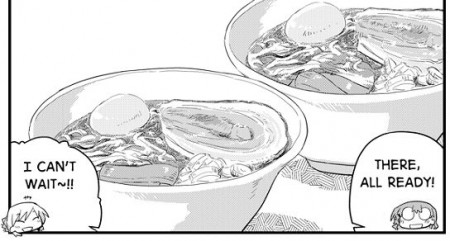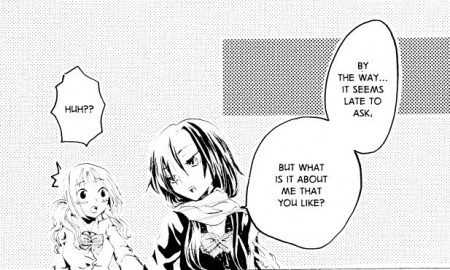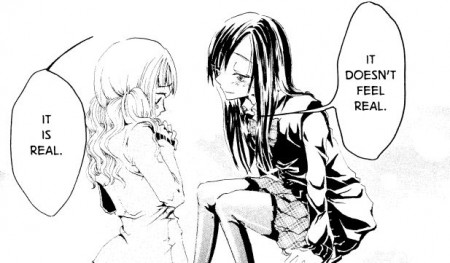GEN’s Latest Offerings Reviewed
Gen Manga has recently released two exclusive English translated manga short stories, the third chapter of professional mangaka Nagumo’s lighthearted drama “Let’s Eat Ramen,” and “Flavor: Urameshiya” doujinshi artist Aji-ichi’s latest tale, “Plastic Blue.”

Following up the first two chapters of Nagumo’s understated domestic comedy Let’s Eat Manga that appeared in GEN Manga issue 8, the individually released chapter 3 is a more subdued narrative that focuses more heavily on narrative development than highlighting varieties of ramen. The 14 page story continues to revolve around high school girl Saeki’s obsession with ramen that conflicts with her anxiety over visiting ramen restaurants alone while simultaneously subtly emphasizing the still transforming relationship between her and her classmate and fellow ramen connoisseur Hozumi. Nagumo’s art has a soft, pleasing design that resembles monochrome anime, and panel lay-out is dynamic enough to keep the mundane story visually interesting without being distracting. GEN Manga’s translation keeps the visual sound effects and background text intact, providing unobtrusive English translations whenever they’re particularly relevant. While not a groundbreaking chapter of manga storytelling, Let’s Eat Ramen 3 is a nice, well-crafted little slice of ordinary Japanese life that international manga fans should find enjoyable.
Creator Aji-ichi’s short story Plastic Blue is a welcome addition to the English language’s underserved selection of yuri manga. The short manga tale is a bittersweet look at adolescent hesitation and love between two schoolgirls. The sweet and vulnerable ingénue and the taller, standoffish tomboy are genre tropes, but they’re unexpectedly addressed with a unique approach in this short story. Visual sound effects are relatively infrequent in this story. Since they’re largely ancillary to the storytelling, they’re left as untranslated background designs. The art design is characterized by sharp line work highlighted by sharply contrasting deep blacks and light traditional shoujo screentone, creating an interesting hybrid look that evokes shoujo manga without putting off readers that aren’t typically affected by the flowery look of shoujo romance manga. The obtrusive weakness of the presentation, however, is the scan resolution that looks much too faint, resulting in a grainy, pixilated look that allows too much detail to evaporate. Especially for typical mainstream manga readers, Plastic Blue is a pleasant change of pace that does a good job of introducing its characters and setting and telling a brief, relatable story about an unconventional teen topic.






